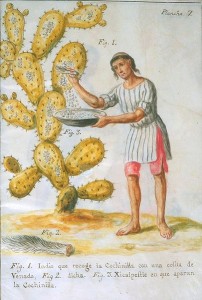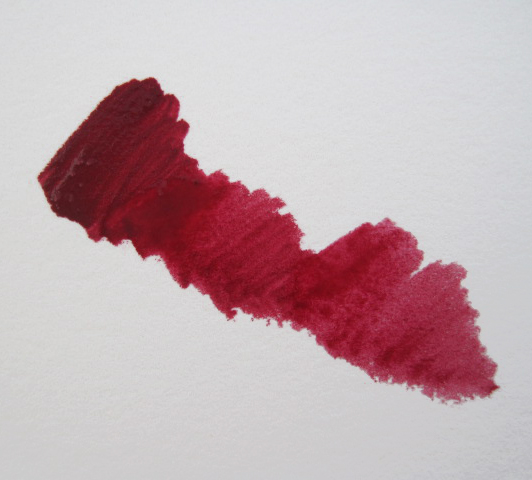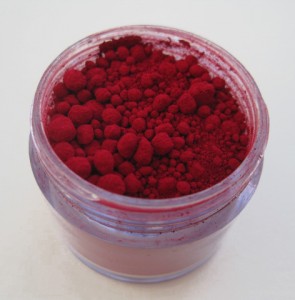Carmine red pigment…
At Christmas, rather than buying commercial Christmas crackers, we make our own. Each member of the family is charged with buying a gift for one of the others – an enjoyable challenge to find something ‘just right’ that is small enough to fit inside! My eldest daughter bought my cracker present this year, and, I have to say, excelled herself – for what popped out, alongside my paper hat and joke, was a pot of Carmine Red pigment.
Originally, red pigment was made from extracting the dye from the kermes insect – the source of our word “crimson” and the Arabic name for a wingless insect living on certain species of European live oaks. These insects were scratched from the twigs with the fingernails and produced a powerful permanent scarlet dye. It is said that this was the dye used by the Hebrews to dye the curtains of their tabernacle. Kermes carmine was used in ancient Egypt, Greece and the near East and is one of the oldest organic pigments.
However, during the sixteenth century a new source was found in the Mexican cochineal beetle, which lives on the prickly pear cactus.

“Indian Collecting Cochineal with a Deer Tail” from Memoria sobre la naturaleza, cultivo, y beneficio de la grana. Coloured pigment on vellum. 1777 Newberry Library: Vault Ayer MS 1031
A tiny insect, it took around 70,000 of them to create a pound of cochineal – or carmine – pigment. This made it both the most expensive ‘red’, and also Mexico’s second most valued export after silver. Soon after the Spanish conquest of the Aztecs cochineal began to be exported to Spain, and by the seventeenth century was a commodity traded as far away as India.
It has now been superseded by the synthetic alizarin crimson, discovered in the nineteenth century.
Here’s my pigment, dry and mixed with egg. It’s a beautiful rich blue-ish crimson.
…and other uses of insects in art…
Iridescent green beetle wing cases were used in Indian miniature painting to represent jewellery. There are several examples in the Victoria and Albert museum in London.

Made in Basohli, India around 1660 by an unknown maker. Beetle wing-case fragments were used to represent jewels. Photo: Victoria and Albert Museum
Working with insects is not a thing of the past though – Canadian artist Jennifer Angus uses dead insects pinned directly to a wall in repeating patterns. The insects she uses come from a rain forest environment and are farmed or collected by local indigenous peoples providing them a livelihood. None of the insects are endangered.




Trackbacks/Pingbacks